Best
AFFORDABLE
MANDOLIN
Acoustic Mandolin AFFORDABLE, VERSATILE,
COMFORTABLE
-
Overall: Bright, Crystal-Clear Tone Exudes In
Abundance From A Spruce Top -
Best Feature: Glide Seamlessly Across The New Zealand Pine Fretboard And Mahogany Neck
-
TedScore™: 9/10
Best
OVERALL
MANDOLIN
Octave Mandolin HIGH-QUALITY
OCTAVE MANDOLIN
-
Overall:
Solid Maple Back And Sides For A Warm
And Resonant Tone -
Best Feature:
Adjustable Truss Rod For Easy
Adjustments To The Neck
And Action -
TedScore™: 8/10
Best
BEGINNER
MANDOLIN
-
Overall: Exceptional Dynamics And Warmth Emanate From A Solid Mahogany Build
-
Best Feature: Beautiful Aesthetic Courtesy Of A Natural Satin Mahogany Finish
-
TedScore™: 8.5/10
Playing any musical instrument can be daunting at first, and the mandolin is no exception.
So, is the mandolin a hard instrument to learn?
Given the number of strings you need to play, the concentration and consistency required to play mandolin, and the hours you need to learn to tune it correctly, you can doubt your ability to play this new instrument.
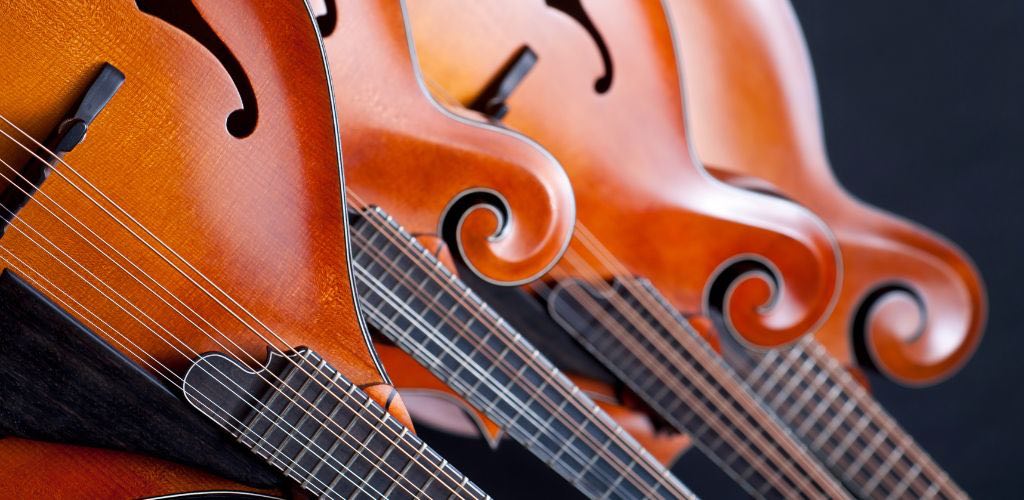
With eight strings arranged in four courses, the mandolin offers a unique challenge distinct from guitars and ukuleles.
Yet, many beginners find that with consistent practice, the basics of the mandolin are easier and quite accessible! The mandolin is versatile and used in a variety of musical genres, including bluegrass, classical, and folk music.
What is a Mandolin?
A mandolin is a captivating stringed instrument in the lute family. Its small, portable design features a pear-shaped body and a narrow neck, making it easy to handle.
Typically, it has eight strings arranged in four courses of double metal strings, each pair tuned in unison. This unique setup gives the mandolin its bright, punchy tone that stands out in any musical ensemble.
Played with a plectrum, the mandolin’s sound is both distinctive and versatile, making it a favorite in various genres such as classical music, bluegrass, jazz, and traditional Irish and Celtic melodies.
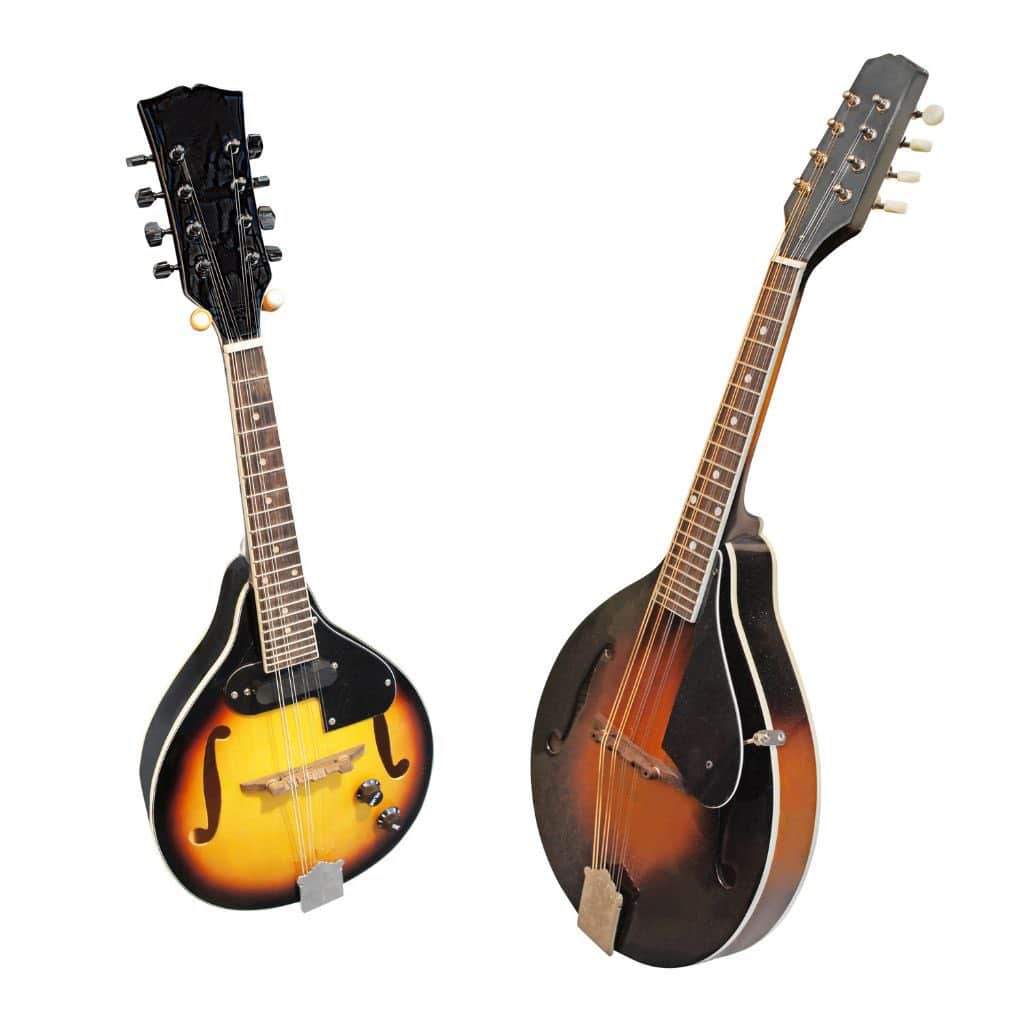
Benefits of
Learning the Mandolin

Embarking on the journey to play the mandolin offers numerous benefits that extend beyond just musical enjoyment.
For starters, it significantly improves finger dexterity and hand coordination, skills that are transferable to other stringed instruments like the guitar.
This makes it an excellent choice for guitar players looking to expand their musical repertoire.
Playing the mandolin also enhances your musical knowledge, particularly in understanding chord progressions and melodies. Despite its unique setup, the mandolin is considered an easy instrument to learn, especially for beginners.
Its compact size and straightforward tuning make it approachable, allowing you to quickly start making music.
Moreover, the mandolin provides a fun and rewarding experience, enabling you to express your creativity and connect with fellow musicians. Whether you’re jamming with friends or performing solo, the mandolin opens up a world of musical possibilities and personal fulfillment.
Getting Started with the Stringed Instrument:
Mandolin
Playing the mandolin promises exciting musical exploration. Let’s get you confidently strumming to the twang of this charming stringed instrument.
Choosing a beginner mandolin that suits your needs is crucial for a positive learning experience.
Choosing Your Instrument
As a member of the lute family, finding the right mandolin for you is a delightful quest.
The round-bodied bowl-back is typical of classical music
The A-style suits a variety of genres
Archtop mandolins project a powerful sound that is great for bluegrass.
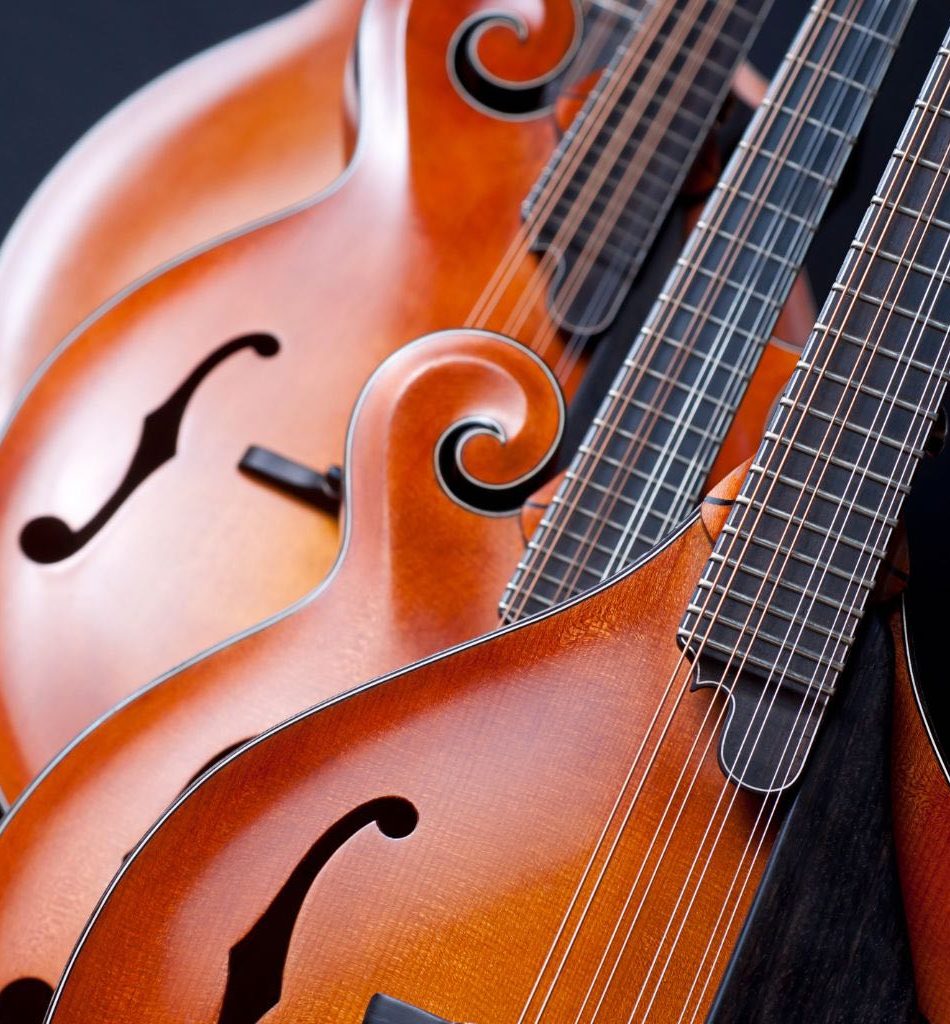
When selecting, consider the mandolin’s sound and how it resonates with your musical taste. It is also important to choose a beginner mandolin that is easy to play and suits your skill level.
And don’t forget to check for double strings. Their unique tuning offers the mandolin a distinctive echo.
Best Mandolins I Highly Recommend
I’m eager to share the finest mandolins I’ve enjoyed playing! Perhaps you’d be keen to look at one!
When choosing a beginner mandolin, it’s crucial to select one that offers good playability and sound quality.
EASTMAN
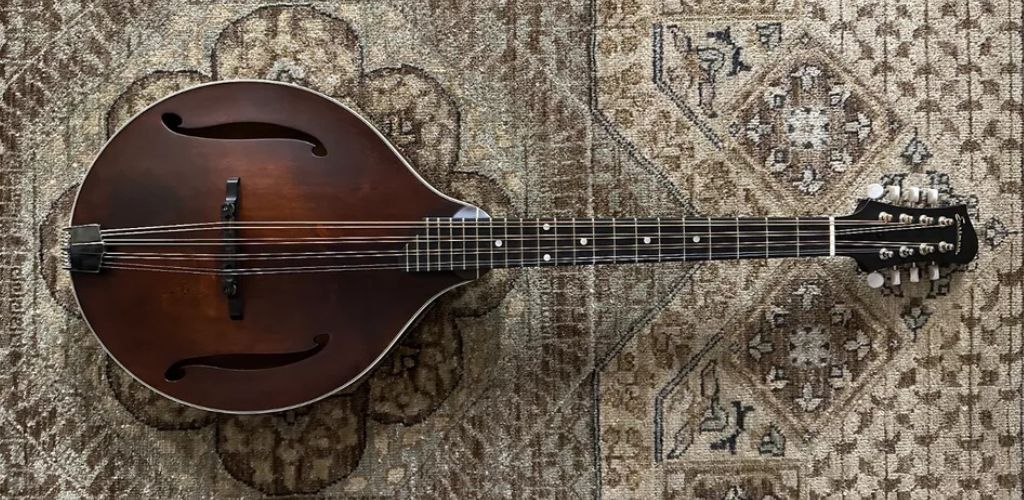
The Eastman MDO305 Octave Mandolin‘s solid wood construction and F-holes offer a rich and warm resonance in a comfortable A-style body.
Its octave tuning enriches my music with an enjoyable, deep sonic character.
Eastman MDO305 Octave Mandolin, A-Style, F-Holes
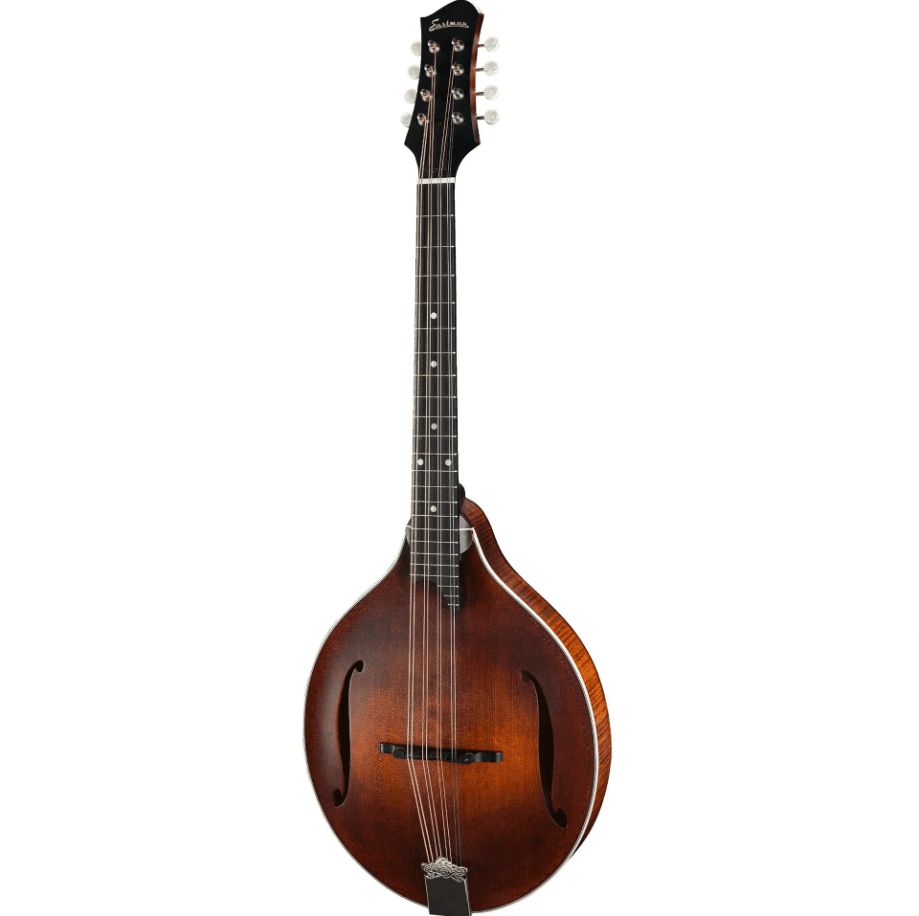
FEATURES: Solid maple back and sides for a warm and resonant tone
OTHER INFO: Adjustable truss rod for easy adjustments to the neck and action
- Excellent tone and projection and a beautiful finish
- Comes with a padded bag for protection during transport
- Higher price point than some other beginner octave mandolins
When you click ‘Check Price’, you’ll see there are loads of great places to buy this item. Our personal favorite is Sweetwater for the US, and Thomann and Gear4Music for the UK & Europe.
They are the largest music retailers, with excellent customer service, competitive prices, really fast shipping, and the longest guarantees.
The professional musician who wrote this article combined many things,
from the product build, manufacturer’s reputation through to feedback
from other users, to create our famous TedScore™.
IBANEZ
The Ibanez M510E Electro Acoustic Mandolin boasts a crisp sound and electric-acoustic flexibility in a visually striking Brown Sunburst finish.
It offers excellent playability and affordability for beginners and professional musicians seeking a performance-ready option.
Ibanez M510E Electro Acoustic Mandolin, Brown Sunburst

FEATURES: Dazzling in looks thanks to a traditional A-shaped body adorned with elegant hardware
OTHER INFO: Bright, crystal-clear tone exudes in abundance from a spruce top
- Affordable price point for a quality acoustic-electric mandolin
- Built-in pickup system allows for easy amplification and performance
- Comfortable and easy to play
- Doesn't come with a case or gig bag
When you click ‘Check Price’, you’ll see there are loads of great places to buy this item. Our personal favorite is Sweetwater for the US, and Thomann and Gear4Music for the UK & Europe.
They are the largest music retailers, with excellent customer service, competitive prices, really fast shipping, and the longest guarantees.
The professional musician who wrote this article combined many things,
from the product build, manufacturer’s reputation through to feedback
from other users, to create our famous TedScore™.
OZARK
The Ozark Mandolin Army and Navy Model combines vintage appeal and a lively, bright tone perfect for folk music with a user-friendly lightweight design, offering great value as an entry-level instrument with a touch of history.
Ozark Mandolin Army and Navy Model

FEATURES: Exceptional dynamics and warmth emanate from a solid mahogany build
OTHER INFO: Beautiful aesthetic courtesy of a natural satin mahogany finish
- Affordable price point for a solid top mandolin
- Good sound quality for the price
- May require some setup or adjustments out of the box
When you click ‘Check Price’, you’ll see there are loads of great places to buy this item. Our personal favorite is Sweetwater for the US, and Thomann and Gear4Music for the UK & Europe.
They are the largest music retailers, with excellent customer service, competitive prices, really fast shipping, and the longest guarantees.
The professional musician who wrote this article combined many things,
from the product build, manufacturer’s reputation through to feedback
from other users, to create our famous TedScore™.
Mastering the Basics: Mandolin Chords

Your journey starts with nailing these fundamentals:
Develop a solid technique for holding the mandolin correctly to prevent bad habits.
A pick, or plectrum, is essential—choose one that feels right for you.
Start with simple strumming patterns.
Use tablature, or “tab,” to ease into reading music, as it’s a straightforward guide for where to place your fingers.
Starting with a beginner mandolin can make mastering the basics easier.
Navigating Common Challenges

Tuning can be tricky with those double strings, but it becomes second nature with regular practice.
Start slow and stay patient—dedication is your best ally.
Online lessons from a reliable music teacher can be a valuable resource, providing guidance without the need to leave your home.
Remember, every mandolin player started somewhere. Choosing a beginner mandolin can help mitigate some of the initial challenges.
If you’re a seasoned guitar player playing your electric guitar or a violinist looking to dabble in a new genre besides your violin, tackling challenges head-on will mark your progress.
Keep at it, and you’ll surely learn to play the mandolin!
Advancing Your Skills

Taking your mandolin play to the next level requires patience, dedication, and strategies. Exploring different musical genres can help advance your mandolin skills.
Are you ready to give your strumming that extra oomph?
Developing Proper Technique
Patience is key when honing your technique. Proper finger placement and mastering strumming across two strings can be intricate, but your dexterity will soar with regular practice.
Exploring new scales and rhythms will breathe new life into your practice sessions. Different musical genres require different techniques, which can help improve overall proficiency.
To give your learning structure, look at sheet music, watch YouTube tutorials, or enroll in lessons on platforms like Udemy or ArtistWorks.
Exploring Musical Genres: Mandolin
Jazz, bluegrass, or classical – the mandolin sings in many tongues!
Sampling a variety of genres, with their unique sound and tempo, spices up your musical journey and helps develop versatility—whether you play chords or pluck single notes on the strings. Exploring different musical genres can enhance your versatility as a mandolin player.
Try matching the genre to your mood, such as listening to a vibrant bluegrass melody one day or mellow classical harmony the next.
Your instrument is a vessel of expression, and each genre nurtures your confidence and playability in distinct ways.
Guitar Chord Shapes on the Mandolin
One of the great advantages of learning to play the mandolin is the ease with which guitar players can adapt their existing knowledge. Many guitar chord shapes can be transferred to the mandolin, allowing you to quickly learn mandolin chords.
The finger positions and shapes are similar, making the transition smoother for those who have already played guitar.
However, it’s important to note that the mandolin has a different tuning and string configuration compared to the guitar. While the guitar typically has six strings, the mandolin’s eight strings are arranged in pairs, which requires some adjustments in finger placement.
By learning guitar chord shapes on the mandolin, you not only expand your musical knowledge but also enhance your versatility as a musician.
Tips for Effective Practice
To truly excel at playing the mandolin, effective practice is essential.

- Set Achievable Goals: Break down your practice into smaller, manageable goals. This approach helps you stay focused and motivated, making progress more tangible.
- Practice Regularly: Consistency is key. Aim to practice for at least 30 minutes a day to build and maintain your skills.
- Use a Metronome: A metronome is a valuable tool for improving your timing and rhythm. Start with a slow tempo and gradually increase the speed as you become more comfortable.
- Focus on Technique: Good technique is crucial for playing the mandolin. Pay attention to proper finger placement, hand positioning, and picking or strumming techniques.
- Learn Music Theory: Understanding music theory can deepen your comprehension of the mandolin. Study chord progressions, scales, and arpeggios to enhance your playing skills.
Playing the
Mandolin with Ease

To play the mandolin with ease, developing proper technique and building finger strength and dexterity are essential. Here are some tips to help you achieve this:
Use the Correct Finger Placement: Place your fingers directly behind the fret, as close to the fret as possible. This ensures clean, clear notes.
Use the Correct Hand Positioning: Hold your hand in a relaxed position, with your wrist straight and your fingers curled over the fretboard.
Use a Pick or Strumming Technique: Experiment with different picking or strumming techniques to find what works best for you.
Practice Barre Chords: Barre chords can be challenging, but with practice, you can build up your finger strength and dexterity.
Learn to Play Double Strings: The mandolin’s double strings can be tricky. Practice playing them to improve your technique and finger strength.
By following these tips and practicing regularly, you can improve your mandolin playing skills and play with ease. Remember to always practice with a reliable music teacher or online resource, such as the Mandolin Cafe, to help you improve your skills and stay motivated.
Is the Mandolin a
Hard Instrument to Learn:
The Bottom Line of Your Musical Journey
Learning the mandolin can be an exciting journey.
A string instrument with a unique sound, the mandolin is often used in bluegrass, folk, and classical music. Its compact size makes it easier to carry, making it approachable for beginners. The mandolin’s versatility across different musical genres makes it a rewarding instrument to learn.
In learning mandolin, here are the things you need to keep in mind:
Finger Flexibility: Pressing the strings might be challenging at first. However, with regular practice, your fingers will become more agile.
Chord Shapes are similar to those on a guitar but with some variations. Once you master basic chords, you’ll feel more at ease.
Strumming Patterns: They add life to your playing. Mastering different rhythms allows you to play various musical styles on your mandolin.
Technique: Proper technique is crucial. Precision will enhance the quality of your sound when playing, from your picking or plucking hand to your fretting hand.
Patience: Like any new skill, it takes time to progress. With perseverance and maybe a few calluses, you’ll get there!

Your journey to learn the mandolin will be filled with fascinating discoveries about its melodic possibilities. The right combination of guidance, practice, determination, and passion makes the learning curve enjoyable.
Let your passion lead the way, and you’ll find that the learning curve is part of the fun!
Hold on! Before you go…
The mandolin differs greatly from the ukulele, banjo, and other instruments. Now that you know that being a mandolin player can be challenging, yet still choose to learn it, this next article would be of great help. Know the best beginner mandolin that you need!
FAQ's
The mandolin is not an easy instrument. The time it takes to learn it varies widely depending on individual practice habits, musical background, and the amount of time dedicated to learning; generally, a basic proficiency can be achieved within a few months of consistent practice. However, mastering the instrument and playing more complex music can take several years of study and practice. Additionally, the time it takes to learn the mandolin can vary depending on the musical genres you are interested in.
For some, learning and performing on the mandolin can be harder than learning on the guitar due to its smaller fretboard, doubled strings, and the need for precise finger placement and picking techniques. However, the guitar requires managing more strings and can involve more complex chord shapes, so the difficulty is subjective and depends on the individual’s learning style and musical background.
Due to its small fretboard and high string tension, the mandolin can be challenging to play compared to other musical instruments. It requires precise finger placement and demands on-hand strength. Mastering the tremolo picking technique and navigating the doubled strings for clean, clear notes adds complexity to the instrument.
Yes, you can teach yourself to play the mandolin using various resources such as online tutorials, instructional books, and practice exercises. However, consistent practice and possibly occasional guidance from experienced players can enhance self-learning.











saw the bit on guitar chord shapes on the mandolin, and it’s sparking some curiosity here. how similar are we talking? can a dude with years of guitar experience jump into mandolin and jam out without missing a beat? looking for some real talk here, cause if it’s close enough, might just add mandolin to the collection. anyone got the lowdown?
Just got my hands on an Eastman after reading through the recommendations. Robert Emery, you were spot on with the advice! I can’t believe how different it feels compared to the generic one I started with. Can definitely hear the quality in every strum. For anyone in the same boat as I was, struggling to choose their first ‘serious’ mandolin, go Eastman. It’s made practicing so much more enjoyable, and I’m excited to dive deeper into mastering the basics. Cheers for the nudge in the right direction!
Ella, glad to hear you’re loving your Eastman! Wait till you get into more complex pieces. It’ll handle them like a dream.